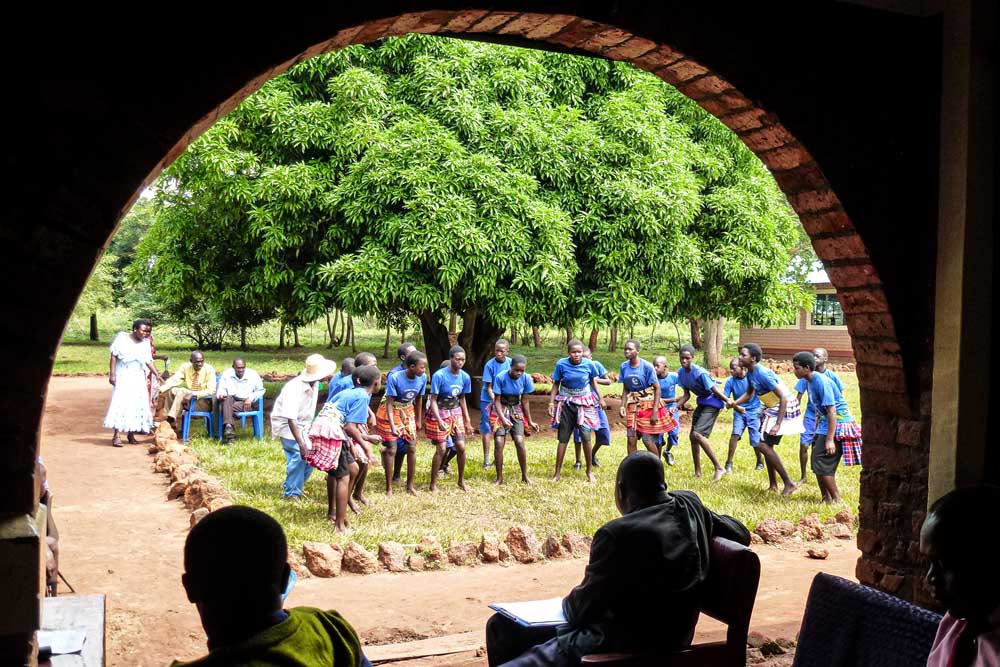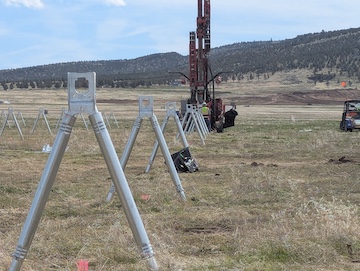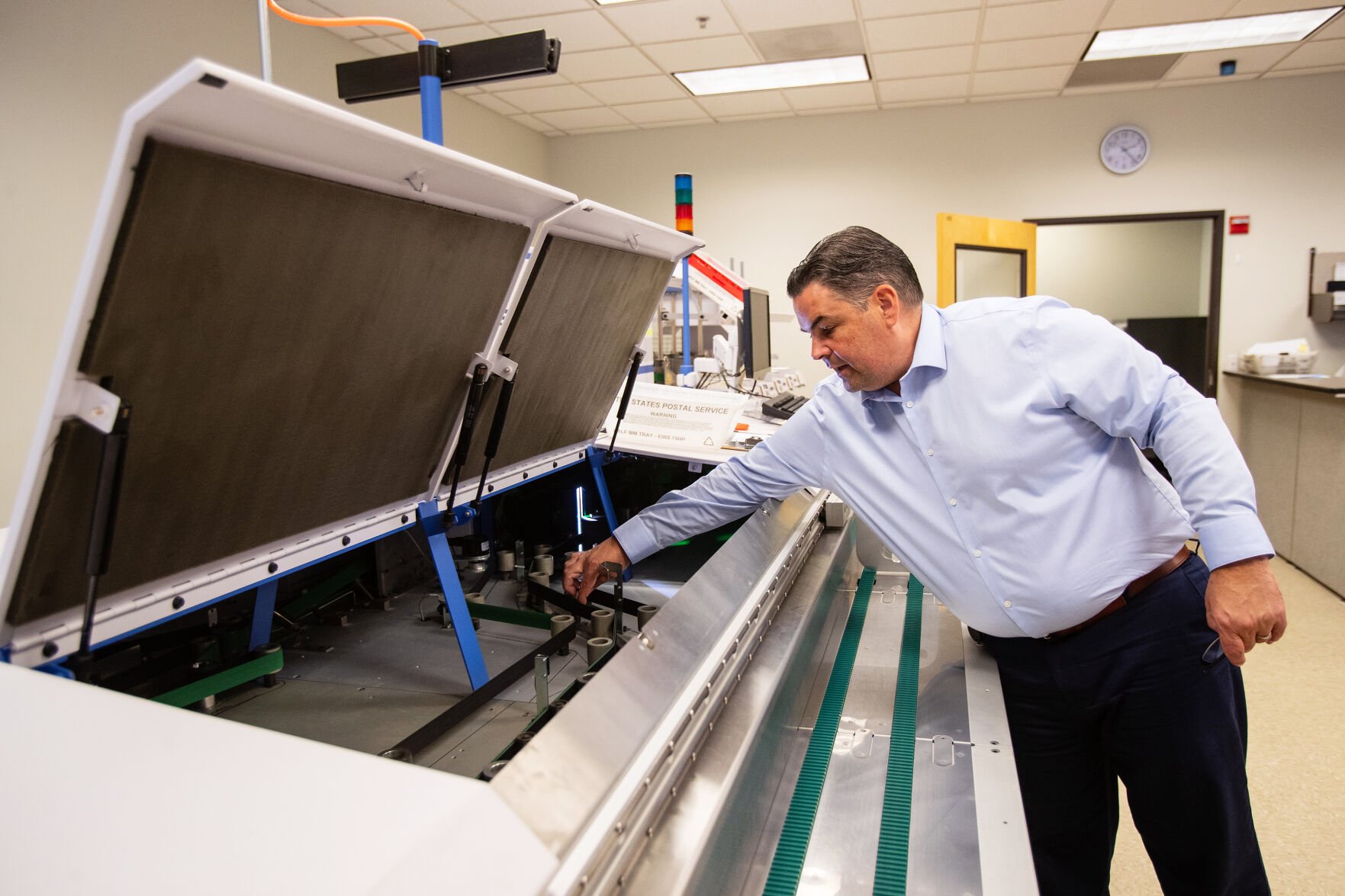Bob Higgins of Tumalo looks back on late-in-life move to Uganda
Published 2:00 am Tuesday, December 26, 2023

- The Higginses worked with local leaders to build schools in Uganda.
By 1997, Bob and Carol Higgins had paid off their Tumalo home. They were 53 years old and had successfully raised two sons. Grandchildren were on the way. The couple was mostly retired and volunteered at a country church in Alfalfa.
That was Bob and Carol’s life. And all indications were that it would remain that way.
Yet within a year, the couple found themselves out of gas and money in rural Uganda, clambering up ant hills to try to find cell phone reception. Both would soon contract malaria, then contract it again and again over the next 14 years. One bout nearly killed Carol.
While recovering, they found themselves pitted against Joseph Kony, one of the most infamous and brutal warlords of the 21st century, who raided the countryside with his army of machete-wielding children. The couple outfoxed Kony, but were left with 80 destitute youth who had been made orphans by his Lord’s Resistance Army.
Now 79 years old and back home in Tumalo, Bob looks back on those years as “the most challenging and most fruitful” of his life. Carol, who died in 2020, told Bob she felt the same way. Their dramatic, late-in-life decision to move to Uganda to become Christian missionaries and builders of schools and an orphanage surprised even themselves. The Higginses had no formal missionary education, had never been adventurous travelers, knew few Black people and couldn’t locate Uganda on a map.
“Looking back, I would not say we were well-positioned for success,” said Bob Higgins. “We didn’t know much. We weren’t trained. We hadn’t traveled and we didn’t have much money. But we just considered it and thought maybe we could try.”
Try they did.
The Higginses wound up spending 14 years in Uganda, first opening schools to teach rural pastors the basics of the Bible. They branched out into clean water projects, opened a mobile medical clinic, then built schools and finally — their crowning achievement — an orphanage.
Higgins, in part to remember his beloved wife who he says was the real writer in the family, wrote memories of Uganda. Those thoughts were published in his memoir “We Don’t Do Orphans: The Story of the Otino Waa Children’s Village in Northern Uganda.” It was published last month by the Bend-based Christian publisher Sure Marketing.
Finding family
Bob Higgins was born in Burns, a teacher’s son. Carol grew up on a wheat farm in Helix, outside Pendleton. After high school both headed off to Oregon State University, where Bob and Carol met as freshmen. They dated awhile and Carol wanted to get married but Bob, always the more cautious of the two, said they should graduate first.
They wed soon after earning their degrees. Carol taught home economics and Bob taught shop in Lake Oswego. After a few years, both took jobs in Bend schools. They bought a home in Tumalo and had two children, Thad and Matt, and Carol quit teaching in order to raise them. Bob taught for a few more years, then transitioned to become a building contractor. Religion played a central part in their lives.
“Along in that journey, we pastored the little church at Alfalfa,” said Bob. “That wasn’t part of our training or experience, but we gave it a try and stayed out there for seven years.”
Leaders of small churches like theirs would get together for a monthly potluck. At one of those gatherings, the Higginses were invited to tag along on a trip to Uganda to train rural pastors.
The Higginses could not locate Uganda on a map and they had never been adventurous travelers. They surprised themselves by saying yes. The couple spent a month traveling in rural Uganda, pushing a pickup through the mud to get to churches. They slept on the floor of the preacher’s home, surrounded by a mosquito net. They relieved themselves in an outdoor pit latrine. They both got ill.
“It was a whole experience, but it was not a day in paradise,” remembers Bob.
Still, they saw deep need. The pastors they met had no training, had little knowledge of the Bible, and could not afford to go to larger cities for teaching. Once home in Central Oregon and noodling on that need, they found a video-based Bible curriculum that included long pauses for translation. The next year, the couple went back for the annual pastor training. This time they brought a VCR and the tapes and were better prepared for the difficulties of rural Ugandan life.
The taped lessons proved a hit. They felt they’d done some good. Flying back home, their brains were puzzling on the possibilities.
“Do we dare think about moving to Africa and training these rural pastors?” remembered Bob. “We thought we ought to try.”
In 1999, they moved to Uganda.
A new life
Bob Higgins said they knew life in Uganda would be difficult, but they moved there because they saw a “great need” and thought they had a “great tool” to help fill that need.
They brought four boxes of possessions with them and moved into a house with one working lightbulb. The culture shock was harder on Bob than his wife.
“My stomach was in a knot all the time — Carol, not so much. She was a better pioneer spirit,” said Bob. “Man, I was out of my element. We had hardly ever been with a minority, then we were the minority. I was very uncomfortable.”
Carol was not. She was cementing relationships, looking at ways to improve efficiencies, and spreading their successes to churches back home.
“It became evident that she’s better at this than I am,” said Bob.
Behind Carol’s zeal, their video trainings found an audience. Soon books had to be translated from English into eight different tribal languages.
For about four years, the couple trained pastors, translated books and looked for American churches who could help fund their efforts. They taught across much of rural Uganda and expanded into Rwanda, the Democratic Republic of the Congo, Tanzania and South Sudan. Bob estimates they trained “probably 2,000 graduates” of the program.
But the Higginses noticed other “great needs” in the communities. Soon, Carol was finding ways to expand programming. She got money from NGOs operating in Ugandan as well as American churches to fund clean water projects in a number of rural villages. Then they started building things — churches and schools.
Bob said the word was out that with Carol’s determination and Bob’s administrative prowess, the couple got a lot done with a little money. Soon governments were pitching in to help fund programs, including a mobile medical clinic that provided basic services to places that previously had none.
Facing off against a warlord
But their growth was not without tribulations. In northern Uganda, it didn’t take long to hear about Joseph Kony and the army he led and the destruction it left behind.
“They were basically raising mayhem … kind of a protest against the government,” recalls Higgins. “They were raiding rebels, abducting children to be child soldiers.”
Higgins heard about a group of children in the war zone — many of whom had been made orphans by the fighting — who were trying to avoid capture or worse. Often, the children would have to flee into the bushes at night to avoid the rebels. None of them ate every day.
The Higginses and their fledgling schools tried to help as best they could, sharing a “bag of beans” to add to the soup pot and sending a little bit of money. Bob was wary about cementing too strong a relationship, since he felt they could not adequately care for the overwhelming number of children in need.
“We didn’t have a budget at all, we didn’t have any infrastructure,” said Bob. “(I said) we don’t know anything about this — we can’t do that.”
Carol didn’t agree. Buoyed by earlier successes, a sponsorship program back in the U.S. brought in enough money first to feed the children, then to house them and finally to educate them. They bought a small piece of land, built dorm-style houses, a school, a cafeteria, a church and more. They were able to hire local women to cook and — despite plenty of threats — Kony’s army never raided the compound.
Bob says the building of what would become known as the Otino Waa Children’s Village, which remains in operation to this day, is the pinnacle of their hard-earned success in Uganda.
“Day to day it was a constant struggle,” said Bob. “It just pressed us all the time.”
Progress was hard to see in the day-to-day, but Bob can now look back and see the successes. They led dozens of clean water projects, erected dozens of buildings, housed and educated hundreds of students at Otino Waa. Some graduates have returned to work there and help care for a new generation of students.
He remembers, after years of hard work, seeing the fruits of their labors. A group of Otino Waa children, arms around each other’s waists, were skipping to school.
“That was just a moment that is frozen in my mind,” said Bob. “They just got to be kids again.”
Transitions back to American life
As hard as it was to learn to live in Uganda, it was just as hard to return. Bob said after 14 years, he and his wife saw their 70s approaching. They tried to leave Otino Waa in good hands and came back to Tumalo and fast-growing grandchildren.
But their experiences in Otino Waa lingered. Bob remembers walking into a Macy’s department store soon after returning and looking out across the endless supply of stuff — at racks and shelves overflowing and shoppers grabbing what they wanted. He couldn’t handle it and had to leave. Having lived in a place where a drop of cooking oil was a luxury — and where a pinch of flour and beans was the difference between living or dying — made it hard to live in a land of so much plenty and so much waste. Carol couldn’t set foot inside a Costco for years.
But they did settle into living like Oregonians again — this time, with a little adventurous streak. At nearly 70, Bob tried his first ever cup of coffee and found out he loved it. So every Saturday until her death, Bob and Carol met at 8 a.m. at the Tumalo Coffeeshop to drink a cup. Bob had a “Saturday gift” for Carol to open at each coffee date.
“We just continued to enjoy each other,” said Bob. “It was a little outing.”
Bob realized he and his wife had “complementary personalities” that allowed them to stretch out of their personal comfort zones. Carol was the creative instigator and Bob was always around to make sure she didn’t get too far ahead of her skis.
One of the few projects she never got around to was writing about their experiences. That gnawed at Bob.
“Carol was the writer — always was,” said Bob. “She should have written the book.”
He took strength from the fact that he was the only one left who knew the whole story of Otino Waa. A few friends nudged him into writing and Bob found — like the coffee — he enjoyed it.
“This was something I did for Carol,” he said. “That was the reason to finish.”





